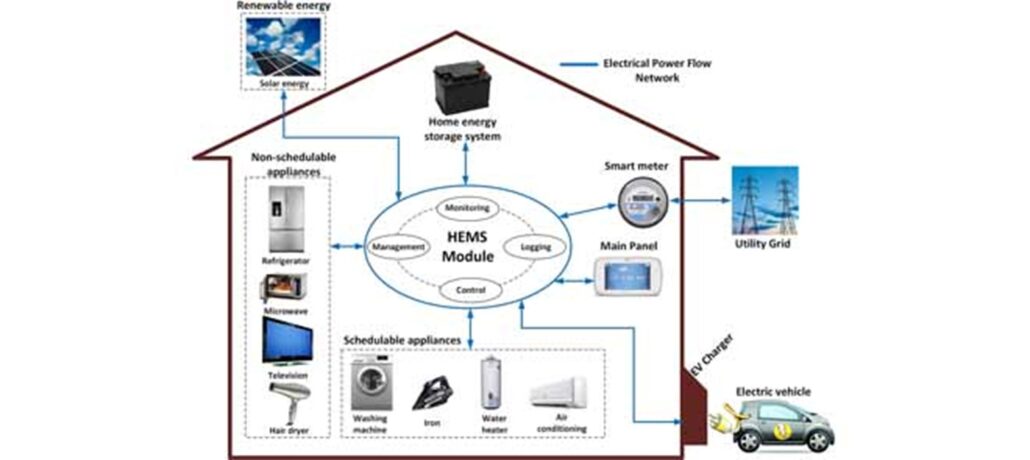Written by Petros Magkos, Electrical Engineer at Wattcrop.
In the drive for sustainability and efficiency, integrating renewable energy sources (RES) and storage solutions into homes that also have smart devices is becoming increasingly common. Combined with energy management systems, these homes promise to revolutionize the way we consume and use energy. But while the benefits are undeniable, some concerns need to be addressed. In this article, we explore both the benefits and challenges of using energy management systems in smart homes with renewable energy and storage, paving the way for a more informed approach to sustainable living.
What is a Smart Home?
A smart home is a comfortable living environment where appliances and devices are connected to the Internet and can be controlled from anywhere with a smartphone. These devices, allow the user to remotely control functions such as secure access to the home, temperature, lighting, and even program devices to start operating. Some of these controllable devices are washing machines, dishwashers, air conditioners, heat pumps, and perhaps electric vehicles (EVs).
What is an Energy Management System (EMS)?
An energy management system (EMS) is a set of tools used to control and optimize energy production, storage, and consumption. It typically involves the use of software and hardware tools. Also includes sensors to collect data and analyze energy consumption patterns.
One of the different applications of energy management systems is the Home Energy Management System (HEMS). Home energy management systems (HEMSs) help manage electricity demand to optimize energy consumption and distribute renewable energy generation and storage without affecting consumers’ comfort. HEMS operates according to multiple criteria, including energy cost, weather conditions, load profiles, and consumer comfort. These systems can control assets such as PV and battery systems, electric vehicles, and small assets such as heat pumps, clothes and dishwashers, and similar devices that have internet access.

Benefits of using EMS in Smart Home with RES and Storage
Energy Efficiency: by automatically adjusting energy consumption patterns without affecting consumers’ comfort in response to fluctuating energy production levels, smart homes can ensure that every kilowatt-hour of renewable energy generated is utilized effectively and minimizing waste.
Cost Saving: using a home energy management system, with all the possibilities it offers for managing energy produced and stored, as well as energy consumption, contributes significantly to reducing electricity costs by reducing dependence on the grid.
Environmental sustainability: reducing reliance on fossil fuels and minimizing carbon emissions associated with electricity generation, these systems help mitigate climate change and reduce environmental impact
Concerns about implementing Energy Management System
Initial Installation Cost: while the long-term savings can outweigh the upfront investment, the initial expense may pose a barrier to adoption for some homeowners
Complexity of technology: Energy management systems rely on sophisticated algorithms and sensors to optimize energy usage, requiring technical expertise for installation and maintenance. Additionally, interoperability issues may arise when integrating different components and devices from various manufacturers
In conclusion, energy management systems play a crucial role in maximizing the benefits of renewable energy sources in combination with smart homes. While the benefits are many, it is important to address concerns such as cost, and complexity to ensure widespread adoption and success of these technologies. By addressing these issues and harnessing the benefits of energy management systems, we can pave the way for a more sustainable and efficient future.

